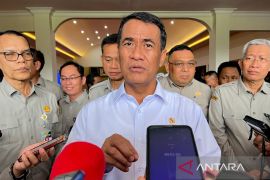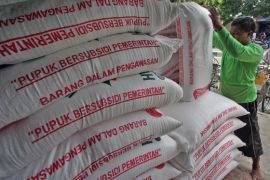"(The regulation on) subsidized fertilizer is a strategic step that has been agreed by the government to optimize the fertilizer distribution process and encourage optimization of agricultural products," Deputy for Food and Agribusiness Coordination at the Coordinating Ministry for Economic Affairs Musdhalifah Machmud stated at a press conference on "Policy Socialization on Subsidized Fertilizers in the Agricultural Sector" in Jakarta, Friday.
Machmud elaborated that the provisions related to subsidized fertilizers were regulated in Minister of Agriculture Regulation Number 10 of 2022 on Procedures for Determining the Allocation and Highest Retail Price of Subsidized Fertilizers in the Agricultural Sector.
He said the government had readied a budget of Rp25 trillion for subsidized fertilizer that will be distributed to 16 million farmers in Indonesia.
In the Ministry of Agriculture, the fertilizers subsidized by the government were urea and NPK fertilizers. In addition, agricultural commodities that received fertilizer subsidies were rice, corn, soybeans, chili, shallots, garlic, sugarcane, coffee, and cocoa, Machmud remarked.
"These nine commodities are expected to support food security and improve the welfare of Indonesian farmers," he added.
Machmud reiterated the government's commitment to supporting and improving governance for the subsidized fertilizer program in economic development, especially in the agricultural sector, to become more innovative and adaptive to technological advancements.
He also expressed optimism that the Indonesian Presidency in G20 would help to provide benefits and maximize existing opportunities to boost the community's economy, especially in the food and agribusiness sectors.
On the same occasion, Director General of Agricultural Infrastructure and Facilities at the Ministry of Agriculture, Ali Jamil, stated that subsidized fertilizers were intended for farmers, with a maximum land area of two hectares per planting season.
Farmers must also be members of farmer groups and be registered in the Agricultural Extension Management Information System (Simluhtan).
The allocation for subsidized fertilizers at the central level will be determined by the Ministry of Agriculture, while allocation at the provincial level was ascertained by the governor, whereas the regional heads in districts and cities would determine the recipients in their areas.
"This program is an improvement that could lead to openness and transparency in the use of subsidized fertilizers," Jamil stated.
He added that the distribution of subsidized fertilizers from retail kiosks to farmers using farmer cards was conducted through electronic data capture machines and/or digital applications.
However, if the Farmer's Card is not yet available, then a resident identity card (KTP) can be used for distribution.
Related news: Jokowi, Putin hold extensive discussions on food, fertilizers
Related news: Ministry encouraging production of eco-friendly organic rice
Translator: Adimas Raditya F P, Resinta S
Editor: Rahmad Nasution
Copyright © ANTARA 2022












